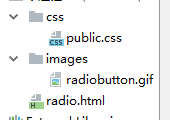I'm writing a C# program to convert a FoxPro database to XML, and everything works except the memo field is blank. Is there something I'm missing to convert that bit?
I'm using C# .Net 3.5 SP1, Visual FoxPro 9 SP 1 OLE DB Driver. Connection string is okay, as all other data is being pulled properly.
When I converted the FoxPro database to SQL Server, the memo field is also blank there, so I can't convert twice.
Ended up having to do some work myself, but maybe it can help someone else out in the future:
public static object GetDbaseOrFoxproRawValue(string DBPath, string TableName, string ColumnName,
string CompareColumnName, string CompareValue, bool CompareColumnIsAutoKey)
{
using (BinaryReader read = new BinaryReader(File.Open(
Path.Combine(DBPath, TableName + ".dbf"), FileMode.Open, FileAccess.Read, FileShare.ReadWrite)))
{
// Is it a type of file that I can handle?
if (new byte[] { 0x02, 0x03, 0x30, 0x43, 0x63, 0x83, 0x8b,
0xcb, 0xf5, 0xfb }.Contains(read.ReadByte()))
{
// Skip date.
read.BaseStream.Seek(3, SeekOrigin.Current);
// Read useful datas...
uint RecordCount = read.ReadUInt32();
ushort FirstRecord = read.ReadUInt16();
ushort RecordLength = read.ReadUInt16();
int FieldCount = FirstRecord - 296 / 32;
// Make sure things aren't stupid.
ColumnName = ColumnName.ToLower();
CompareColumnName = CompareColumnName.ToLower();
// Find target column (field)
string temp;
UInt32 CompareFieldOffset = uint.MaxValue, FieldOffset = uint.MaxValue;
byte CompareFieldLength = 0, FieldLength = 0;
char FieldType = ' ';
for (int i = 0; i < FieldCount; i++)
{
read.BaseStream.Seek(32 + (i * 32), SeekOrigin.Begin);
temp = Encoding.ASCII.GetString(read.ReadBytes(11)).Replace("\0", "").ToLower();
if (temp == CompareColumnName)
{
read.ReadChar();
CompareFieldOffset = read.ReadUInt32();
CompareFieldLength = read.ReadByte();
}
if (temp == ColumnName)
{
FieldType = read.ReadChar();
FieldOffset = read.ReadUInt32();
FieldLength = read.ReadByte();
}
if (CompareFieldOffset != uint.MaxValue && FieldOffset != uint.MaxValue)
break;
}
// Make sure we can continue.
if (CompareFieldOffset == uint.MaxValue ||
FieldOffset == uint.MaxValue) return null;
// Iterate through each record to find the one we want.
for (int index = 0; index < RecordCount; index++)
{
read.BaseStream.Seek(FirstRecord + (index * RecordLength) + CompareFieldOffset, SeekOrigin.Begin);
temp = Encoding.Default.GetString(read.ReadBytes(CompareFieldLength)).Replace("\0", "");
if (temp == CompareValue)
{
read.BaseStream.Seek(FirstRecord + (index * RecordLength) + FieldOffset, SeekOrigin.Begin);
switch (FieldType)
{
case 'M':
case 'I': return read.ReadUInt32();
case 'C':
default: return Encoding.Default.GetString(read.ReadBytes(FieldLength)).Replace("\0", "");
}
}
}
}
else
{
return null;
}
}
return null;
}
Just grab the result from that and use it as an index into the memo file (that code is pretty simple using the MSDN documentation).
I am not terribly familiar with C# or FoxPro or SQL Server, so I cannot give you much advice in that regard.
However, if you cannot find a suitable driver, you may consider parsing the raw data and memo files yourself. Another question has dealt with this:
What's the easiest way to read a FoxPro DBF file from Python?
Believe it or not, these file formats are quite simple to parse should you decide to write your own C# parser. These specifications are available from Microsoft:
- Visual FoxPro File Structures
- Table File Structure
- Memo File Structure
I use ODBC to link VFP 8 tables and the memo fields work with no problem. I don't know if OLEDB is different.
You might not have Visual FoxPro tables here. Many VFP systems use the same tables as the FoxPro 2 or dBase application they replaced. You could look at the file header or just try one of the other ODBC drivers to see if they work.



